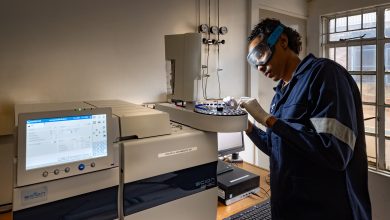
The choice of thermal carrier is critical to ensure optimal manufacturing
Historically steam, fuelled by coal, has been the most prevalent thermal carrier in South African industry. However, according to Dennis Williams, Commercial Director of boiler operations and maintenance service provider AES, times are changing, with the manufacturing and processing sector needing to review the energy reticulation systems and thermal carriers currently in use.
When it comes to the correct choice of thermal carrier, Williams believes many questions must be asked: “How is steam being used? Should steam supply be outsourced? Is steam the right fit for every process in the manufacturing or processing facility? How much of that facility is aligned with steam – and how much with another thermal carrier? What are the implications of switching those? If changes are made, could the cost of production be reduced and quality improved?”
He advises that the best place to start is by fully understanding the company’s primary product, and the potential roles of different thermal carriers in the production process.
Steaming ahead
Steam remains the most user-friendly thermal carrier. Inert, non-toxic and safe, it minimises dangers such as product contamination or fire in the event of a leak – which can happen with thermal oil, which is highly flammable and operates at high temperatures. Therefore, from a process safety management perspective, steam is a good choice.
Furthermore, steam can be generated across a range of pressures and heating can be tightly controlled: “For the purposes of controlling temperature to cook food, one does not want to scald it. When relying on steam at a certain pressure, the thermodynamics preclude that,” Williams explains.
When using thermal oil or other heat transfer fluids, temperature control is more challenging, because the production process hinges on a temperature differential with no phase change: ”If thermal oil is used at 350°C and only 180°C is required for the product, the flow must be controlled to avoid scorching the product. However, a significant flow is also required to transfer the same amount of energy – compared to using steam – because that phase change is not there and heat transfer relies on sensible heat transfer,” he advises.
Pressurised hot water
Williams says that lower temperature requirements of 120 to 150°C do not require steam. Instead, by using a pressurised water heater, the water temperature will rise to the desired level without boiling and flashing to steam.
This process is used quite extensively in companies such as breweries. Another example is when cleaning plant or equipment. Pressurised hot water can be used to heat up a caustic solution, which is then reticulated through the plant.
Gas and hot air
The textile and paper industries use these extensively. “In the paper industry, there is a hood over the main paper cylinder which is heated using gas. The flame is not fired onto the paper. Instead, it is directed to the air directly in front of the burner flame. A flue gas-air mixture radiates onto the paper surface – to dry out the last bit of moisture,” Williams explains.
Alternatively, manufacturing or processing companies can use a combination of thermal carriers. For example, an AES client making coffee and coffee creamer sprays a liquid slurry from the top of a tower. As the droplets cascade downwards, a counter-current flow of heated air removes moisture – so that dry product can accumulate at the bottom of the tower: “The major portion of heat input comes from a cold air-to-steam heat exchanger. The steam heats up the air. A direct fire on gas then fine-tunes the temperature of that air,” he outlines.
Thermal oil
Thermal oil is widely used in the textile sector, where it is reticulated through stenters and other textile machinery to provide the temperatures required for heat treatments to fabrics.
“Thermal oil therefore has specific applications, where higher temperatures can be achieved than when using a typical industrial process steam application. You do not want to be running a 45-bar boiler to achieve 265°C. You would rather run thermal oil, which operates at a higher temperature range,” Williams points out.
Making the right choice
Williams says that for many in the manufacturing or processing sector, it is useful to invest time in going back to the drawing board – as making the right choice of thermal carrier is critical: “The way things have always been done may no longer be the right way now – and decision-makers could unlock far more lasting and meaningful savings by carefully analysing key issues such as sustainability and efficiency,” he points out, adding that many companies are now integrating different thermal processes into one fully optimised system.
Condensate and low-grade heat can also be recovered for re-use in optimised systems. However, the capital outlay will differ across thermal carriers – with decisions influenced by fuel and technology selection.
In summary, when considering thermal carrier changes or upgrades, Williams warns against price-based procurement and recommends a longer-term, value-based approach: “When you understand why you are doing something, the value reveals itself. It is not about paying less. It is about deriving maximum value from the production process and achieving optimal operational performance, margin and end-product,” he concludes.






